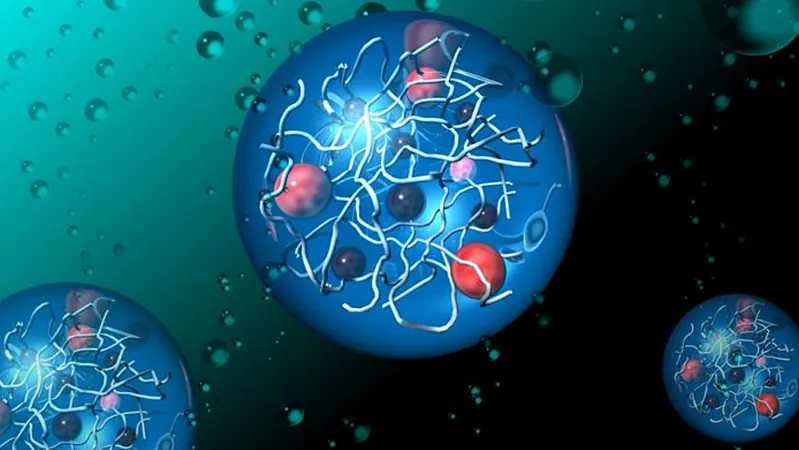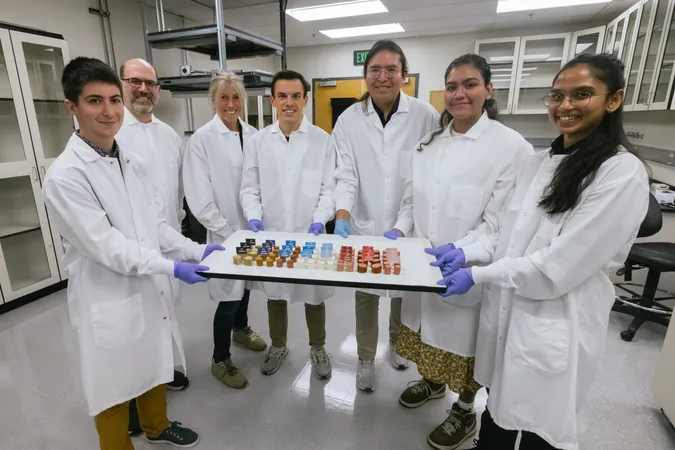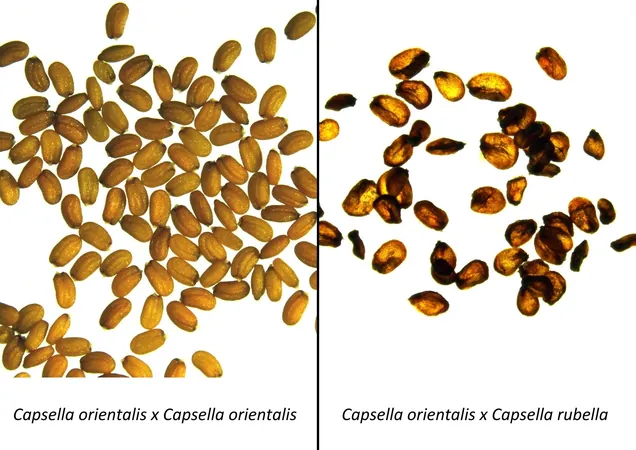
Revolutionary Hydrogels Capture Sunlight: A Major Leap Toward Artificial Photosynthesis
2024-11-07
Author: Charlotte
Introduction
In a groundbreaking move toward sustainable energy, scientists are getting one step closer to mimicking how plants harness sunlight to create energy. The dream of artificial photosynthesis—using sunlight to initiate chemical reactions that produce clean energy—has faced challenges, but recent innovations offer fantastic hope.
Innovative Hydrogel Development
Researchers from the Japan Advanced Institute of Science and Technology (JAIST) and the University of Tokyo have unveiled a new type of bioinspired hydrogel capable of generating hydrogen and oxygen by splitting water molecules through solar energy. This development could revolutionize clean energy production, as hydrogen emerges as one of the most promising fuels for the future.
Efficiency and Cost-Effectiveness
Unlike conventional methods using solar photovoltaics or electrolysis, which depend on additional energy sources, this hydrogel mimics nature by directly utilizing sunlight, potentially leading to greater efficiency and lower costs. The study, a significant milestone in the journey toward renewable energy, was published in the journal Chemical Communications.
Research Team and Methodology
Led by Associate Professor Kosuke Okeyoshi and doctoral student Reina Hagiwara at JAIST, along with Professor Ryo Yoshida from the University of Tokyo, the team crafted these hydrogels with intricately designed polymer networks. These networks are crucial for the effective electron transfer needed to split water into hydrogen and oxygen. Furthermore, the hydrogels are embedded with functional molecules, including ruthenium complexes and platinum nanoparticles, which help replicate the natural photosynthesis process.
Organizational Challenges and Solutions
"The main challenge was to arrange these molecules for smooth electron transfer," Professor Okeyoshi explained. "Utilizing a polymer network helped us prevent the common issue of molecule clumping seen in synthetic photosynthesis systems."
Enhanced Energy Conversion Efficiency
Reina Hagiwara added that the unique organizational structure of the molecules within the hydrogel significantly enhances energy conversion efficiency. A key accomplishment of this study is that the hydrogels effectively prevent functional molecule aggregation—an issue that hampered previous artificial photosynthesis attempts. This breakthrough has notably increased hydrogen production, which sets this hydrogel apart from earlier technologies.
Implications for Clean Energy
The implications for clean energy are substantial. Producing hydrogen from just water and sunlight could make it a cornerstone of future energy systems, providing a renewable alternative to fossil fuels. "Hydrogen stands out as an exceptional energy source due to its cleanliness and renewability. Our hydrogels present a viable method for hydrogen production utilizing sunlight, potentially redefining energy technologies sustainably," said Okeyoshi.
Next Steps and Future Challenges
As artificial photosynthesis becomes more active, this study advances us toward a future where renewable hydrogen might power industries, transportation, and energy storage systems. Nonetheless, the researchers acknowledge that more work is required. Scaling up production capacity for these hydrogels and ensuring their long-term stability will be pivotal next steps. "We have demonstrated the potential, but refining this technology for industrial application is our next challenge," remarked Professor Okeyoshi. "The opportunities ahead are thrilling, and we’re determined to continue advancing."
Future Research Directions
In addition to optimization, the research team is also looking into enhancing the hydrogels' energy conversion efficiency through precise integration techniques. With these promising developments, the future of artificial photosynthesis looks brighter than ever!









 Brasil (PT)
Brasil (PT)
 Canada (EN)
Canada (EN)
 Chile (ES)
Chile (ES)
 España (ES)
España (ES)
 France (FR)
France (FR)
 Hong Kong (EN)
Hong Kong (EN)
 Italia (IT)
Italia (IT)
 日本 (JA)
日本 (JA)
 Magyarország (HU)
Magyarország (HU)
 Norge (NO)
Norge (NO)
 Polska (PL)
Polska (PL)
 Schweiz (DE)
Schweiz (DE)
 Singapore (EN)
Singapore (EN)
 Sverige (SV)
Sverige (SV)
 Suomi (FI)
Suomi (FI)
 Türkiye (TR)
Türkiye (TR)